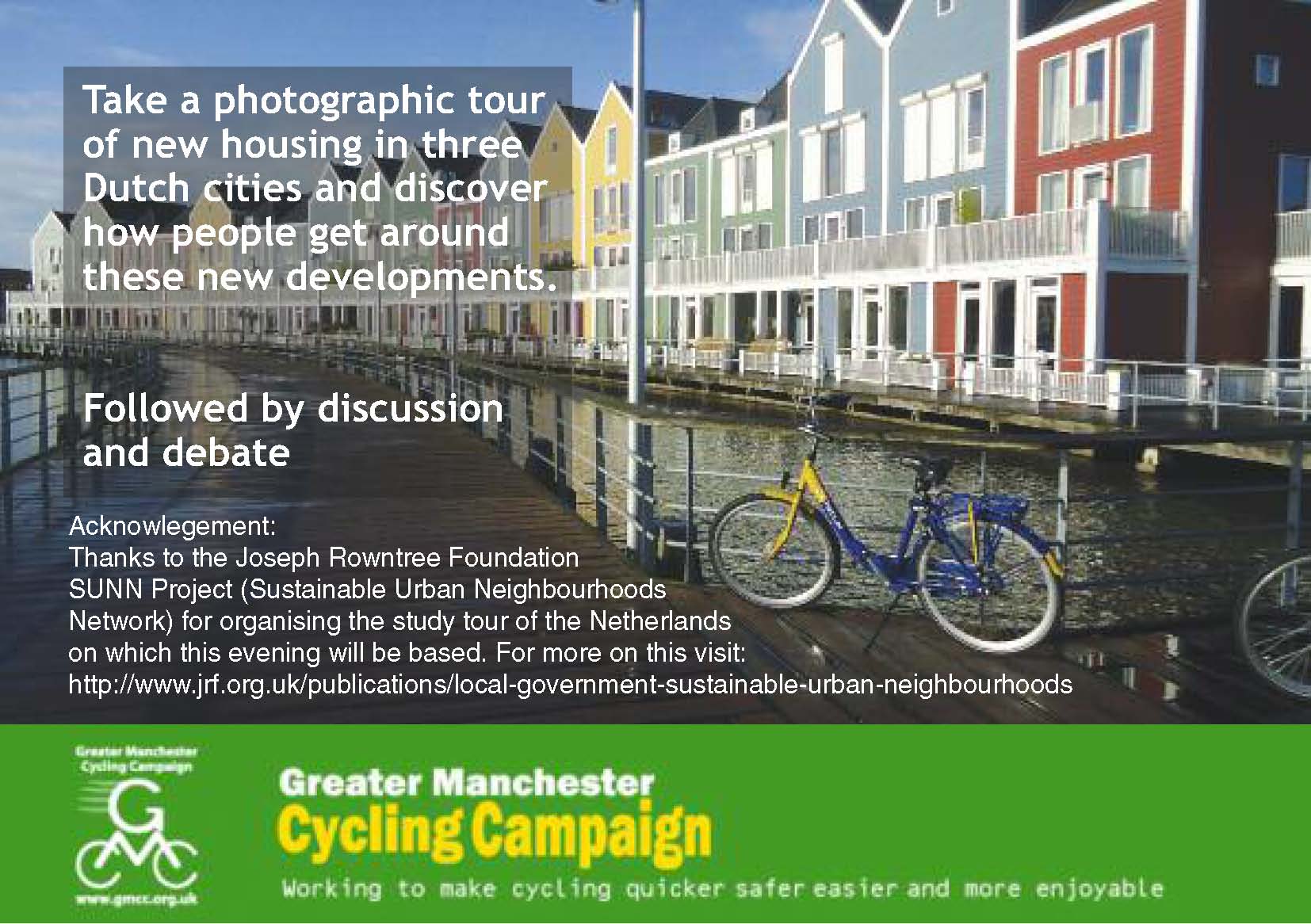Going Dutch Presentation and Discussion
Going Dutch: new homes, new travel arrangements in the Netherlands
Who: The speaker will be Richard Armitage CMILT, Chair, Cycling Forum, Chartered Institute of Logistics & Transport
When: Tuesday 1st May 2012 - 7pm
Where: Friends Meeting House, Mount Street, Manchester M2 5NS
Greater Manchester Cycling Campaign hosts a special presentation. Take a photographic tour of new housing in three Dutch cities and discover how people get around these new developments. Followed by discussion and debate.
To reserve a place and assist catering RSVP: honsec@gmcc.org.uk
Transport consultant Richard Armitage is a member of SUNN, the Sustainable Urban Neighbourhoods Network. In autumn 2011 he joined a study tour of new housing in three Dutch cities. Richard explains the background:
“So just how good is cycling in the Netherlands? Last year, I got the chance to find out for myself. I was privileged to join a study tour of new housing in three Dutch cities, organised by the Joseph Rowntree Foundation SUNN Project.
Over two years SUNN arranged for a group of 60 professionals involved in new residential developments - designers, architects, urban planners, developers, housing association managers, and one transport specialist (me) - to tour new developments around England. This was a fascinating and instructive process, showing the good, the bad and the sadly indifferent in modern residential areas. And at the end, we went Dutch……………...
In the Netherlands we viewed three cities: Amersfoort, Houten and Almere. The new homes we saw have many different designs and sizes. The bicycle is frequently the best way to get around - the quickest and most direct route between A and B, the most pleasant way to travel (traffic-free). Proper cycle storage, hire and maintenance facilities abound. This leaves public transport - mainly rail - to take you longer distances (e.g. to work).Despite high quality building standards, low energy consumption homes, pleasant surroundings and significant transport infrastructure investment, the finances work. Public subsidy is minimal, yet these developments are financially successful.
The car is never allowed to dominate the streets or the view in these new urban extensions but there is still plenty of parking. It is not about ownership but use and management. Meanwhile, Dutch motorway queues are easily as good as ours, so the car has not been banished. The results are obvious to see and Dutch people are queuing up to live in these areas, especially Houten near Utrecht.”


